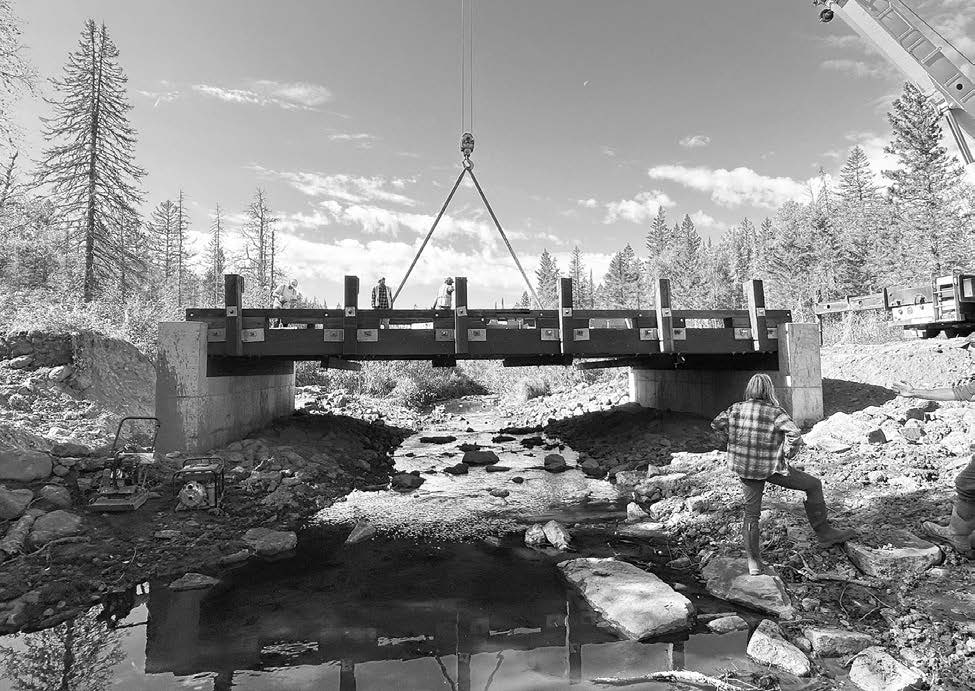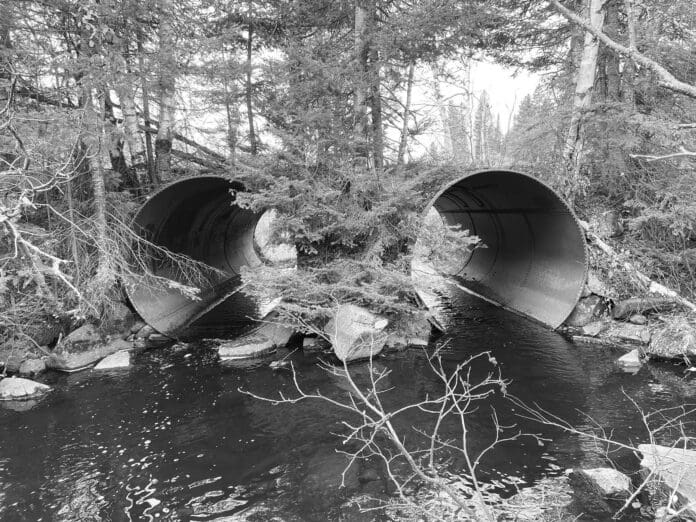MN DNR
Work is complete on a new bridge south of Finland that opens up miles of trout habitat and preserves a trail connection where Hockamin Creek intersects with the CJ Ramstad ATV and Snowmobile Trail in northeastern Minnesota’s Finland State Forest.
Funded by Get Out MORE (Modernize Outdoor Recreation Experiences) dollars, the Ramstad crossing project is one of many projects in the Baptism River watershed that focused on providing connectivity to cold water habitat for brook trout and other cold water fish species.
Before installation of the new bridge, culverts for the creek were too small to effectively manage high water conditions, resulting in flooding of the trail. During low water conditions, the culverts were elevated above the creek, acting as a fish barrier.
“Climate change is driving an increase in extreme precipitation and flood events, which places more pressure on water-related infrastructure,” said Sarah Strommen, Minnesota Department of Natural Resources commissioner. “The water infrastructure projects included in Get Out MORE funding will modernize outdoor recreational experiences while making these areas more resilient to climate change and enhancing aquatic habitat.”

In addition to fish passage, this and other nearby culvert replacements are improving public safety. These bridges allow residents and emergency vehicles to travel in remote areas in and around the Finland State Forest. Flooding can damage and force closure of roads and trails, as happened during flooding in 2022 and 2024. With roads closed, residents and emergency vehicles traveling south of the Finland area had to take long detours of as much as 20 miles.
For brook trout, the culverts were a barrier in low water conditions when the creek wasn’t high enough to get into the bottom of the culverts. During these times, when weather can be hot, trout need to migrate to deeper, cooler pools in the creek to survive. The new bridge allows the stream to flow freely, opening miles of fish habitat for trout on this tributary of the Baptism River.
“As recently as five years ago, seven undersized culverts fragmented Hockamin Creek, making it difficult if not impossible for fish to pass,” said Dean Paron, Minnesota DNR stream habitat supervisor. “We’re excited to get this completed and remove the last barrier along the main creek.”
Statewide, Get Out MORE funding for stream restoration projects such as this one will reconnect an estimated 156 miles of streams. Project benefits are not limited to the site of construction. Projects provide upstream and downstream benefits to clean water, habitat improvement and climate resiliency, as well as enhanced recreational opportunities and safety upgrades.
Partners with the Minnesota DNR in the Ramstad crossing project included Trout Unlimited, Lake County Soil and Water Conservation District and the Minnesota Pollution Control Agency. Partners collaborated to obtain state and federal funding, design the new crossing and oversee construction. The bridge had to accommodate snowmobile groomers and be strong enough to support logging trucks using the forest road during timber harvest.
The creek also will benefit from forest planning and work in the area from The Nature Conservancy. TNC has planted tree species along the creek that will survive higher temperatures brought on by climate change. In the spring, those trees will shade the snowpack, helping it last longer into the spring and keeping stream temperatures cooler into the summer.
“I think we’re making a landscape-level difference,” Paron said. “Climate change is a huge issue. But I think we’ve done some pretty good work that will be beneficial well into the future, not just for brook trout but for the streams themselves.”
Not long after finishing the bridge, there was even an unexpected visitor captured in a trail camera photo of the project – a moose made its way across the bridge.
Funding for the project came from the Sustain Our Great Lakes Program, the Minnesota Outdoor Heritage Fund via Trout Unlimited and DNR’s Get Out MORE program. More information about the project is available on the DNR website.



